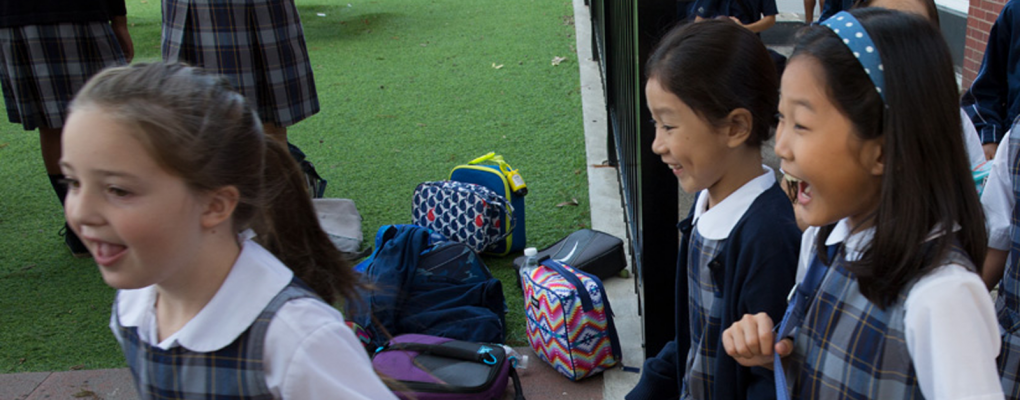As we head into our last month of virtual school and our third month of quarantine/social distancing it’s a good time to check in with our kids again. As things begin to open up we want the children to get clarification on what is safe and understand what this all means. Kids need to truly understand what this next phase looks like and how to continue social distancing while trying to be active, healthy and most of all happy.
Social distancing is a term many of us were not familiar with until the pandemic. Social distancing does not have equal social isolation. How do we explain this new way of being to our children? Using simple language and concepts, at least as a starting point, is the best approach for younger kids – tweens. Higher levels of stress and anxiety can make it more difficult to process complicated ideas. Children vary so much in their verbal and social-emotional development that even kids that share the same age may have a different understanding of these complex times. The goal is to break it down in ways that keeps it simple, but meaningful for your children. Talk about it honestly and emphasize the positive we can all do.
Below are some excellent videos you can watch with your younger children to get the conversation started again:
- BrainPOP’s animated explanation is straightforward but doesn’t talk down to kids and includes a number of activities to extend the conversation.
- Given the popularity of graphic novels, this comic from NPR answers a lot of kids’ most pressing questions about the coronavirus.
- “Why do I have to wash my hands?” The StoryBots have a fun video that sings when, why and how to wash your hands.
- PBS ForKids has a list of videos from Daniel Tiger’s Neighborhood, Sesame Street, Curious George and Super Why! that talk about germs and hygiene.
- Dr. Michelle Dickinson, aka Nanogirl, explains the coronavirus in a video with stuffed animal germs.
- The great kids podcast Brains On! devoted a full episode to the coronavirus.
Below are some websites to review with up to date information for parents:
- Talking to Children About COVID-19 (Coronavirus): A Parent Resource from the National Association of School Psychologists
- Talking to Kids About the Coronavirus from the Child Mind Institute
- How to talk to children about the coronavirus from the Harvard Health Blog
- Tips from Christine Conelea, PhD, assistant professor of psychiatry at the University of Minnesota Medical School
- The CDC website is a good resource for staying up to date with the latest recommendations to protect your family during a COVID-19 outbreak.
These 10 phrases can help you explain social distancing to your kids.
By, Rebecca Schrag Hershberg, PhD
- “We’re all working together to fight this foe.”
Children respond well when we personify things that are difficult to understand. Even through elementary school, they often think of the world in terms of good guys and bad guys, superheroes and villains. If we speak about germs as if they are tiny villains we are attempting to fight, children have a mission to latch onto, a larger purpose that extends beyond just obeying their parents’ instructions.
For example, you could personify the virus (and give your child a “mission”) by saying, “Right now we are all working together to stop coronavirus from spreading. The good news is that germs can’t jump very far! If we stay far away from people, then the germs can’t jump from person to person and make us all sick.”
- “Here’s what we can do.”
When we speak to our kids about this new reality, it’s important to be concrete and spell out the things that we cannot do in very clear terms, for example: “We have to stay far away from other people right now; we can’t hug, or hold hands, or even go to each other’s houses. What we can do is FaceTime, talk on the phone, write letters, and draw pictures we can send in the mail.”
It’s important to note the things we still can do in order to maintain strong connections with our loved ones. After all, physical distance is not the same as emotional distance, and many children can grasp that there are ways to feel very close to someone, while not being with them in the same space. Highlighting that, as well as providing opportunities for them to experience it (via FaceTime, Zoom chats and so on), will be critical.
- “This is weird and different.”
Children take comfort in knowing they are not alone in their emotional reactions. They are undoubtedly picking up on how strange things feel, how different things are now from the normal structure and routines of their daily lives. Pointing that out using simple language, and acknowledging that everyone is feeling the same will do a lot to regulate their emotional response.
- “A lot of things are still the same.”
When we acknowledge how different things feel right now, we also need to draw attention to things that are the same. This helps children recognize that there are still many parts of their lives that are familiar and recognizable. They still love Paw Patrol, or Frozen 2, or video games, they still get chocolate chip pancakes for breakfast on Saturdays, they still have to brush their teeth. And they’re still just as loved as ever—in fact, even more.
- “You are safe.”
Children show their stress in different ways: throwing more tantrums, being more moody, irritable or defiant, or regressing in a particular area such as language or potty training. However your kids are showing that they’re worried—or even if they are not yet—there is nothing more valuable than giving them a hug and letting them know you’ve got them and it’s all going to be okay.
- “There are so many grown-ups working together to help.”
This is the famous wisdom from Mr. Rogers, that we need to look for the helpers in times of crisis. Talk to your children about the scientists working on finding the right medicines and vaccines, the doctors and other health care workers, the police and the supermarket stockers working hard to help us all.
- “This stinks.”
Because it really does. And our kids will benefit if we validate that rather than trying to deny it or always paint a rainbow on it. It stinks that the school play, or the sports season, or the birthday party is canceled. It stinks that it’s about to get really nice out, and we can’t all get together for a picnic. It stinks that we can’t see Grandma and Grandpa. It stinks that we can’t give our best friends hugs. It really, really does.
- “But also, there’s a bright side.”
Reframing is not the same as invalidating. You cannot say that this spring break is going to be the best one ever without your kids seeing right through you. You can, however, point out the silver linings—and in fact, there are many. Look at how many crafts we can do! Look how much screen time you’re getting! OMG, we get to watch a whole movie (or two, or five) on a weekday?
- “We are all in this together.”
Children—and grown-ups—feel more secure when they recognize that they are part of a larger community. For younger kids, it can be helpful to name everyone else who is staying home as part of social distancing: “No one is seeing anyone right now—not Grandma, not Grandpa, not Uncle Ben, not Aunt Alison, not your friends from school.” For older kids, talking about the different cities, states, and countries undergoing this can be comforting: “10-year-olds in so many places aren’t allowed to see their friends right now.”
10. “We are taking this one day—sometimes even one hour—at a time.”
Kids and grow-ups alike get overwhelmed if we start thinking about having to make these life adjustments for too long. Thinking of not hugging Grandma and Grandpa, missing school events and not having play dates with friends for the upcoming months can feel very overwhelming. Instead, focus on what is going to happen today, and on what we can do to stay present and happy in the moment. Remember that sometimes giving comfort isn’t about having “the right words” at all- its as simple as a really long hug or sharing your favorite desert.
As I said before, there is no perfect way to go about handling our new reality. Always supporting our kids and helping them learn, understand and thrive, is what we are all reaching for.
Please continue to reach out to me as a resource for you and your family – Socialworker@nullacademyolmc.org
Jamie Kagan-Heit




